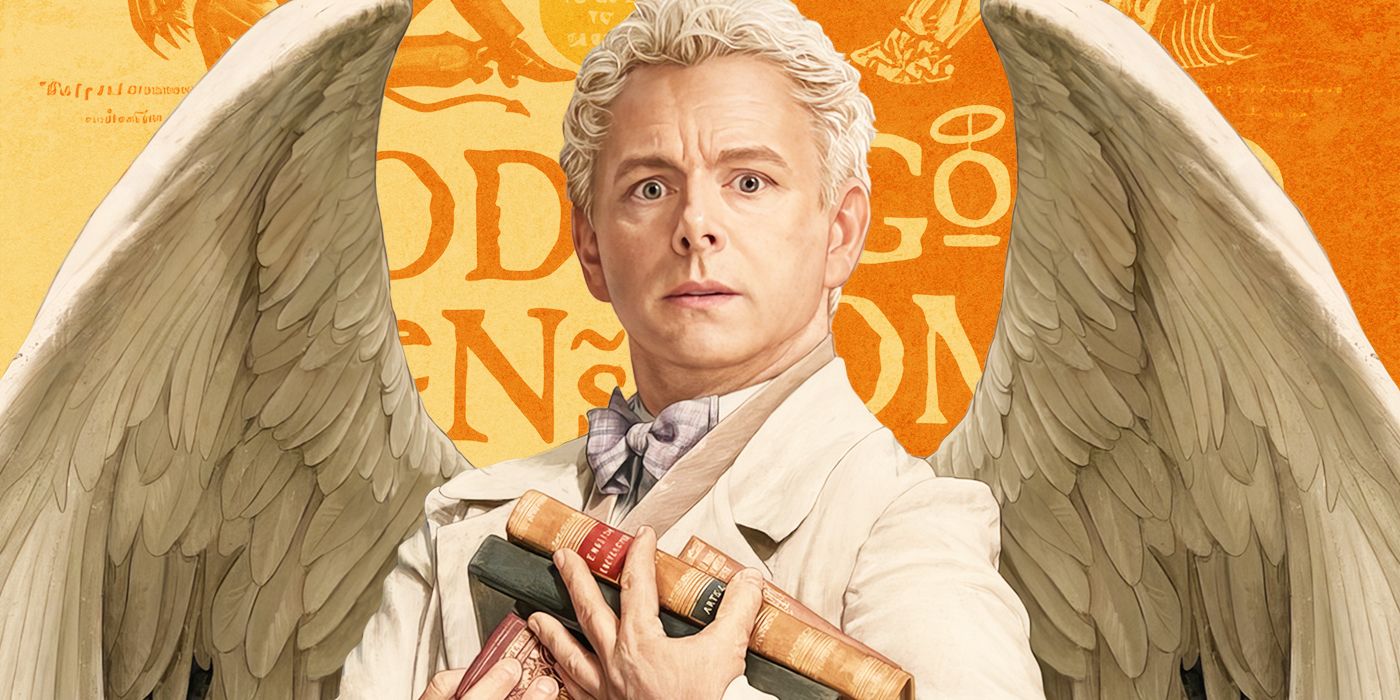Season 2 of Good Omens will delve deeper into the universe created by Neil Gaiman, introducing fresh elements that were not originally present in the book. The TV series will focus more on the characters of Aziraphale and Crowley, providing a backstory and further developing their relationship. Several notable differences exist between the novel and the show, including the expanded role of Gabriel, the absence of the Four Other Riders of the Apocalypse, and the addition of scenes like the cocoa prophecy.
When Prime Video’s Good Omens premiered in 2019, fans eagerly anticipated seeing how Gaiman and Terry Pratchett’s novel would be transformed into a miniseries. Now, with Season 2 on the horizon, viewers are excited to witness Gaiman’s expansion of the universe he helped create decades ago. The new season will have no connection to the original book, as the story of the Armageddon that never occurred was concluded in the sixth episode of the first season. Creating new elements for an established fictional universe is a challenging task, as series like The Handmaid’s Tale and Game of Thrones have demonstrated. However, Season 2 of Good Omens is not the first time the show has explored unfamiliar territory. Even in the first season, there were deviations from the book, with certain aspects being altered or omitted to better suit the onscreen narrative.
One of the most notable differences in the TV series is the increased prominence of Aziraphale and Crowley. In the novel, they are just two characters among many, whereas in the show, they take on the roles of de facto protagonists. As a result, their backstory is more extensively explored on screen. Episode 3, for instance, delves into their interactions and bond throughout history, from the Garden of Eden to the present day. This expanded backstory also allows for a deeper emotional connection between the angel and the demon, fulfilling the hopes of fans who have long yearned for a confirmed romantic relationship between the two.
Another major deviation from the novel is the introduction of Gabriel, portrayed by Jon Hamm in the TV series. While Gabriel is a prominent character in the show, he is barely mentioned in the book. Most of the antagonistic elements in the novel come from hellish minions, with Gabriel’s role being amplified for the screen adaptation. Neil Gaiman has acknowledged that he drew elements for Gabriel from a potential sequel to the book, allowing for a more seamless integration of the character into the Good Omens universe.
Heaven and God also receive more emphasis in the TV show compared to the novel. The appearance of Heaven is depicted as an ultra-minimalist, all-white office, while God serves as the narrator, voiced by Frances McDormand. In the book, the details of Heaven’s appearance, as well as Hell’s, are not explicitly described. God’s presence is more felt through her absence, with her plans for humanity remaining mysterious due to the limited insight into her thoughts.
One notable omission from the TV series is the Four Other Riders of the Apocalypse, a group of Hell’s Angels bikers who accompany the primary horsemen, only to meet a tragic end. Budgetary and time constraints led to their exclusion from the show, but their absence is mourned by fans. Let us take a moment to remember the memorable names of these characters: Grievous Bodily Harm, Really Cool People, Cruelty to Animals, and People Covered in Fish.
While some elements were cut from the story, others were added. One noteworthy addition is the cocoa prophecy, a scene that does not exist in the final form of the book. In the TV show, Aziraphale discovers a prophecy about a man in a room filled with books, with a cup of cocoa growing cold nearby. This particular prophecy does not appear in the original writings of Agnes Nutter, but it enhances the narrative and adds a charming touch to the series.
Crowley’s distinctive red locks are another addition not present in the novel. In the book, Crowley is described as having dark hair, but the decision to change his hair color to red in the show emphasizes his fiery and hellish nature. David Tennant, who portrays Crowley, explained that the transformation allowed him to fully embody the character.
Lastly, the beloved voice of Freddie Mercury delivering messages from Hell through Crowley’s Bentley radio does not feature in the TV series. In both the book and the show, any tapes or CDs left in a car for more than two weeks turn into a Best of Queen album. This leads to the logical conclusion of having Freddie Mercury himself deliver messages through the car’s radio. Unfortunately, this comedic aspect was left out, likely due to rights issues.
In conclusion, Season 2 of Good Omens promises to expand the established universe, introducing fresh elements and further developing beloved characters. While there are differences between the book and the show, these divergences contribute to a unique viewing experience, captivating fans old and new.
Denial of responsibility! TechCodex is an automatic aggregator of the all world’s media. In each content, the hyperlink to the primary source is specified. All trademarks belong to their rightful owners, and all materials to their authors. For any complaint, please reach us at – [email protected]. We will take necessary action within 24 hours.
Khushi Patel is a science fiction author who lives in Austin, Texas. She has published three novels, and her work has been praised for its originality and imagination. Khushi is a graduate of Rice University, and she has worked as a software engineer. She is a member of the Science Fiction Writers of America, and her books have been nominated for several awards.


